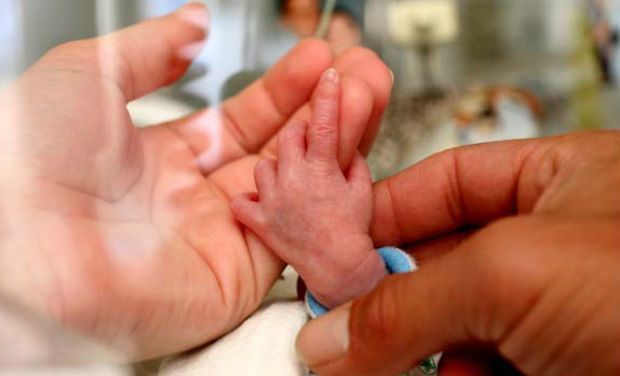Congenital heart defects (CHDs) are the most common type of birth defect, where the incidence can vary from 8 to 12 per 1000 live births globally. CHDs can affect the structure of a baby’s heart, the way it works and impact how blood flows through the heart and to the rest of the body. CHDs can vary from mild (such as a small hole in the wall of the heart) to severe (such as missing or poorly formed parts of the heart).Critical CHDAround 1 in 4 babies born with a heart defect have a critical CHD (also known as critical congenital heart defect). These types of heart defects usually lead to low levels of oxygen in a newborn. Babies with a critical CHD will require surgery or other procedures.Newborn screening for critical CHDs involves a simple bedside test known as, pulse oximetry. This test estimates the amount of oxygen in a baby’s blood. Low levels of oxygen in the blood can be a sign of a critical CHD. The test is done using a pulse oximeter machine, with sensors placed on the baby’s hands or palms. It is a painless test and takes only a few minutes. The timely diagnosis of this birth defect will help prevent disability and death by initiating early treatment. Dr Apoorva Taduri, Consultant Neonatologist, Fernandez HospitalCauses The causes of CHDs among most babies are unknown. Some of them are caused because of changes in their individual genes or chromosomes. CHDs also are thought to be caused by a combination of genes, the mother’s health status, medication use during pregnancy and environmental factors. The mothers-to-be who are at higher risk of having a fetus with a heart defect can undergo fetal ECHO (Echocardiography) evaluation. For a few defects, fetal surgery may be required. However, some CHDs are not detected until after birth or later in life.Signs and symptomsSigns and symptoms for CHDs depend on the type and severity of the particular defect. Some defects might have few symptoms and some might not. These are some of the symptoms a baby can have:• Blue-tinted nails or lips• Fast or troubled breathing• Tiredness when feeding• Excessive sleepinessIf a healthcare provider suspects the presence of a CHD, the baby can get tests such as an ECG, to confirm the diagnosis. TreatmentTreatment for CHDs depends on the type and severity of the defect. It can be a non-surgical procedure like device closure or balloon dilatation. Some infants and children might need one or more surgeries that are categorised as palliative and corrective. Long-term CareChildren with CHD require regular follow up with a specialist. Improved care has helped many children with CHDs to live into adulthood. They must be evaluated for any underlying genetic conditions that can influence long-term outcomes. Counselling the family for recurrence in subsequent pregnancies is also recommended. In the long-term, a few of these children can have repeated infections, irregular heartbeats, abnormal heart function and lung problems. Parents of children with CHDs need to discuss long-term care with healthcare providers. Routine check-ups with a cardiologist will help them stay as healthy as possible. As a part of essential newborn care, many state governments have initiated screening for congenital heart disease using pulse oximetry. Various central and state government insurance schemes cover the treatment of CHDs. Increasing awareness and availability of screening and treatment will significantly improve the care of children with CHDs.
Source link
Improving Awareness and Ensuring Accessible Treatment





